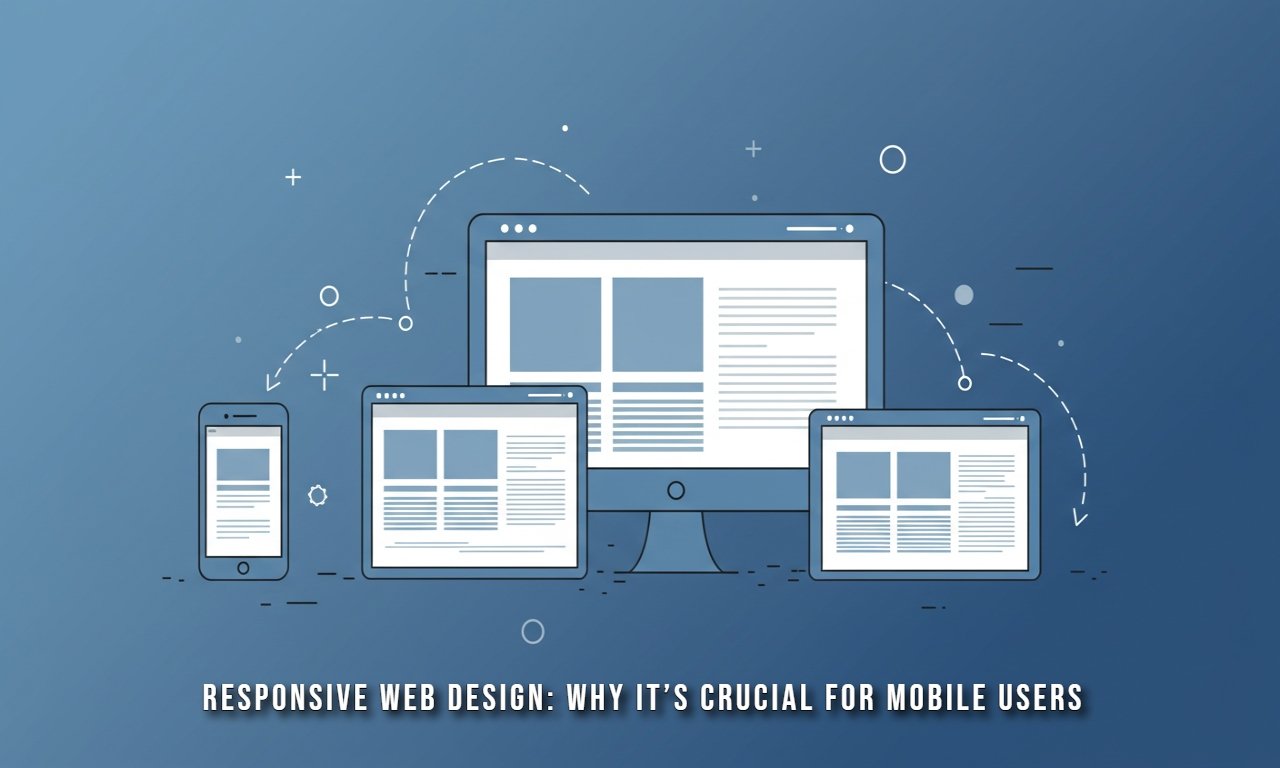More than half of all internet traffic today comes from smartphones. For many people, their first interaction with a business happens on a mobile device. If your website isn’t prepared for that, you risk losing potential customers in seconds. That’s where responsive web design becomes vital.
A responsive website doesn’t just “shrink” to fit a smaller screen—it adapts. It adjusts layouts, images, fonts, and even functionality, creating a smooth browsing experience no matter the device. For businesses that want to build credibility and stay competitive, responsive web design isn’t just a nice extra. It’s the standard.
If you’re running a business in New Jersey or anywhere else, investing in a responsive site through a professional partner such as a web design company in New Jersey is one of the smartest decisions you can make.
What Exactly Is Responsive Web Design?
Responsive web design (RWD) is a development method that ensures a single website works across all screen sizes. Instead of creating different versions of a site for desktop, tablet, and mobile, responsive design adapts automatically.
It uses:
- Fluid grids: Proportional units that scale elements smoothly.
- Flexible images: Graphics that resize or crop intelligently.
- CSS media queries: Code that applies specific styling depending on screen size.
The result? A user doesn’t need to pinch, zoom, or scroll sideways to read your content. Everything feels natural to their device.
Why Responsive Web Design Matters for Mobile Users
Let’s look deeper into why mobile users depend on responsive design.
1. Mobile Traffic Keeps Growing
Data shows that mobile browsing has overtaken desktop. People shop, read, book services, and research products on their phones. If your website isn’t mobile-friendly, you’re essentially shutting the door on half of your potential audience.
2. Trust and Credibility
First impressions count. A website that looks broken or hard to use on mobile instantly signals to users that the business may not be professional or reliable. A well-designed responsive site builds trust from the very first click.
3. Improved User Experience
User experience (UX) determines whether a visitor stays or leaves. Responsive web design ensures buttons are easy to tap, text is readable, and navigation is intuitive. For mobile users who often multitask, ease of use is non-negotiable.
4. SEO and Search Ranking Benefits
Search engines like Google prioritize mobile-friendly websites. If your site isn’t responsive, it could slip down search results, making it harder for customers to find you. Responsive web design aligns your site with search engine standards.
5. Lower Costs Over Time
Instead of maintaining separate desktop and mobile sites, one responsive website reduces workload and saves money. Updates apply across all devices, making long-term maintenance simpler and more affordable.
Features That Make a Website Truly Responsive
Responsive web design is about more than resizing. It’s about building intelligently. Here are the must-have features:
- Mobile-first design: Start with mobile screens in mind, then expand to larger ones.
- Flexible typography: Text sizes adjust for readability on all devices.
- Optimized images: Files are compressed without losing clarity.
- Responsive navigation: Menus that switch to mobile-friendly formats, like hamburger menus.
- Breakpoints: Custom layouts for common screen widths.
- Touch optimization: Buttons and forms designed for tapping, not just clicking.
When these are built into your site, every visitor enjoys the same quality of experience.
Mistakes That Hurt Mobile Performance
Many businesses fail to implement responsive web design correctly. Avoid these pitfalls:
- Using fixed-width layouts that don’t scale.
- Ignoring mobile page speed, which frustrates users.
- Overloading pages with heavy images or unnecessary scripts.
- Forgetting accessibility, like readable fonts and proper colour contrast.
- Designing for desktop first, leaving mobile as an afterthought.
By sidestepping these errors, you ensure your site works as intended for every user.
How a Web Design Company in New Jersey Helps
If you’re a business owner, you may not have the time or expertise to redesign your website on your own. That’s where a web design company in New Jersey steps in. They can:
- Audit your current website for mobile-friendliness.
- Implement responsive layouts that align with your brand.
- Optimise speed and performance for local audiences.
- Ensure your site meets both user needs and SEO standards.
- Provide ongoing support and updates.
Professional expertise ensures your investment results in a site that’s not only functional but also designed to convert visitors into customers.
Best Practices for Responsive Web Design
To maximise results, consider these proven practices:
- Prioritise Speed: Compress files, minimise redirects, and optimise code.
- Focus on Simplicity: Avoid cluttered layouts that overwhelm small screens.
- Test Across Devices: From iPhones to Androids to tablets, test thoroughly.
- Design for Touch: Make sure interactive elements are big enough to tap.
- Use Scalable Fonts: Fonts should adapt without breaking layouts.
- Plan for Content: Ensure headings, images, and CTAs remain visible and clear.
These small details collectively make a big impact on user satisfaction.
Case Study: Why Businesses in New Jersey Need Responsive Design
Let’s say a local restaurant in Newark wants to attract new diners. Most people looking for dining options search on their phones. If the restaurant’s website isn’t mobile-friendly—menus that don’t load, contact buttons too small to tap—potential customers will move on to a competitor.
Now imagine that same restaurant invests in responsive web design. The menu loads quickly, the phone number is clickable, and directions open in maps instantly. That convenience directly translates into more reservations and walk-ins.
For any business looking to grow in a competitive market, web design New Jersey solutions that prioritise responsiveness can make a measurable difference.
Responsive Web Design and E-commerce
E-commerce is one of the biggest areas where responsive design pays off. Customers expect smooth product browsing and checkout experiences on their phones. A responsive online store means:
- Faster browsing across catalogues.
- Easy-to-tap “Add to Cart” and “Buy Now” buttons.
- Mobile-optimized payment gateways.
- Fewer abandoned carts due to frustration.
Without responsive design, you risk losing sales at the most critical stage—the checkout.
The Future of Responsive Web Design
Technology will continue to evolve, but responsive web design will remain relevant. With foldable phones, smart TVs, and wearable devices, adaptability will be more important than ever.
Businesses that adapt early will benefit the most. By making responsiveness a priority today, you future-proof your website for tomorrow’s devices.
FAQs
Why is responsive web design important for small businesses?
Responsive web design is important for small businesses because it ensures customers can access your website easily on any device. Many people search for local services on their phones, so if your site doesn’t adapt, you risk losing them to competitors. A responsive website builds trust, improves readability, and encourages visitors to stay longer. It also supports better search rankings, which helps more people find your business online. Whether you’re offering services or products, working with a professional web design company in New Jersey ensures your site looks good and functions smoothly for mobile users.
How does responsive web design affect SEO?
Search engines, including Google, rank mobile-friendly websites higher in search results. Responsive web design ensures your content is accessible and user-friendly on any screen, which directly improves your SEO performance. Faster loading times, lower bounce rates, and better usability are all signals search engines use to prioritise websites. For businesses trying to compete in competitive markets like web design New Jersey, having a responsive site can give you an edge over competitors who still rely on outdated designs. In short, a responsive website doesn’t just benefit users—it also helps search engines connect more people to your business.
What’s the difference between mobile-friendly and responsive web design?
A mobile-friendly website works on mobile devices but often comes with a fixed design that doesn’t adjust perfectly to every screen size. Responsive web design, on the other hand, is flexible—it adapts layouts, images, and navigation to fit smartphones, tablets, and desktops seamlessly. The experience feels natural no matter what device the visitor uses. For modern businesses, responsive design is the better option because it reduces maintenance costs and delivers consistent branding. A professional web design company in New Jersey can help you shift from outdated mobile-friendly sites to a fully responsive design that supports growth and customer satisfaction.

